Walking into any indigenous village in Taiwan, we can always catch a glimpse of church buildings and bright red crosses. Can it be that all indigenous people in Taiwan are Christians? Rituals and ceremonies play an important role in indigenous religious culture, but under the influence of outsiders, Taiwan’s indigenous people begin to follow practices of foreign religions, such as praying with incense sticks, reciting the Bible, and converting to the Christian faith. What on earth has contributed to the widespread popularity of Christianity among Taiwan’s indigenous communities?
First Arrival of Christianity
Brought by Netherlands Colonizers
Christianity was first brought to Taiwan by the Netherlands colonizers in the 17th century, although their main purpose was trade and commerce. The Netherlands Reformed Church began their missionary work in Tainan. They introduced the Roman alphabet and employed it to compile the dictionary of the local indigenous language. They also produced a translation of Christian doctrine as a means to foster the link between the indigenous community and Christianity. At the same time, Catholic missionaries that came along with the Spaniards based in Northern Taiwan were also engaged in their missionary work but were not as influential as the Netherlands church.
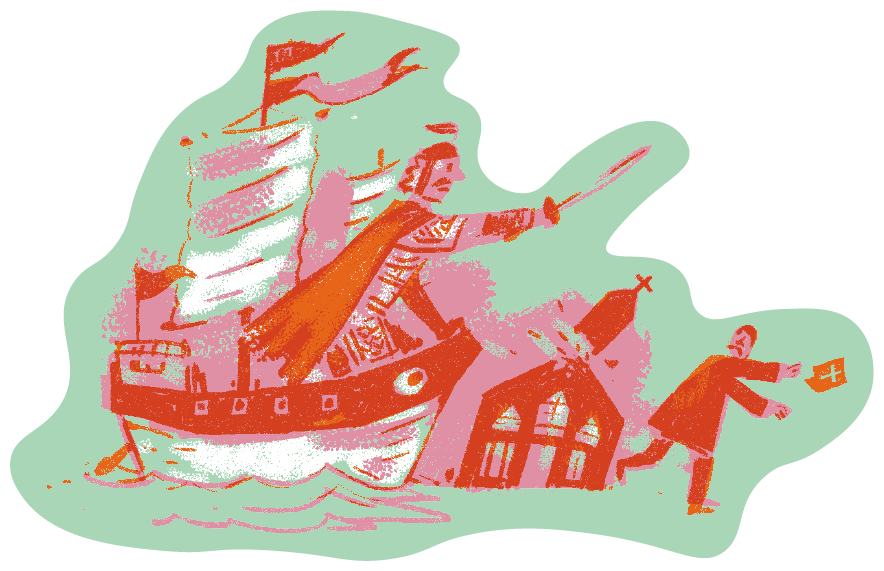 Completely Banned
Completely Banned
and Expelled
After Koxinga, the Chinese Ming loyalist who resisted the Qing conquest of China, defeated the Netherlands and took over Taiwan in 1661, an anti-Christian policy was strictly enforced by the regime. Missionaries were persecuted and churches destroyed, drawing the transmission of Western religions to a complete halt. The activities of Christianity seemed to have virtually disappeared since then.

Influx of Western Religions
with the Opening of Ports
In the 1860s, the Qing Empire signed the Treaty of Tianjin with Great Britain, opening the ports of Hobe (today’s Tamsui) and Takao (today’s Kaohsiung) to foreign trade. Since then, Taiwan has seen a large influx of Western religious activities that left a profound impact on the Taiwanese society.
The 19th century saw the global expansion of colonial powers, and Western religions were no exception. With the achievements of their home countries, Western missionaries often viewed colonies with a sense of cultural and religious superiority. Those who came to Taiwan tended to be prejudiced against the indigenous peoples and approached them with an attitude as if they had come to “civilize” them. These missionaries, while serving as preachers of the gospel, were imperialists at heart. They regarded indigenous people as “backward and barbaric” but ignored their violence toward the colonized. Such a condescending attitude of missionaries has had a far-reaching influence on Taiwan’s indigenous society, depriving many local Christians of chances to express their voices in the church.
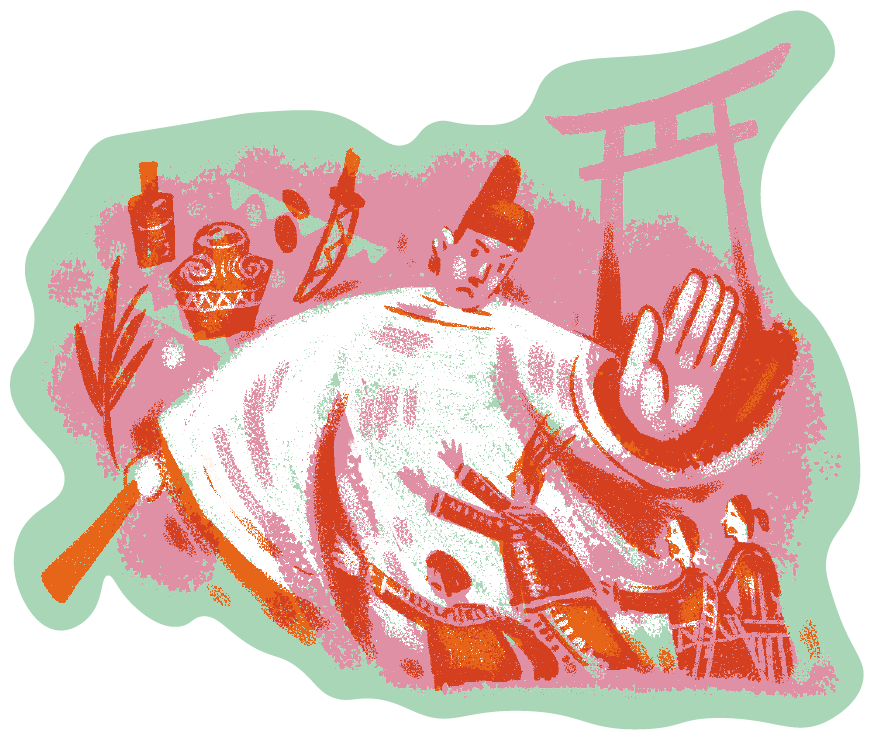
The Supremacy
of Japanese Spirit
After the First Sino-Japanese War, Taiwan was ceded to Japan in 1895. The Japanese government categorized religions in Taiwan into two types: One is the “old customs and beliefs” including Confucianism, Taoism, and Buddhism of the Non-indigenous Chinese immigrants; the other the Christianity from Europe. In the early days of Japanese rule, religious freedom was respected by the government, and no strict control was imposed over Taiwanese people’s religious beliefs. In the 1930s, however, as the international situation became increasingly tense, the government began to implement the “Kominka Movement” (Japanization) as a means of thought remolding to reinforce control over the colonized and facilitate the mobilization of human and material resources. Likewise, the spirit of Japanese imperialism was promoted in terms of religion, which was embodied by the establishment of Japanese shrines. The traditional religious system and beliefs of Taiwan’s indigenous peoples were wiped out, resulting in their loss of faith.
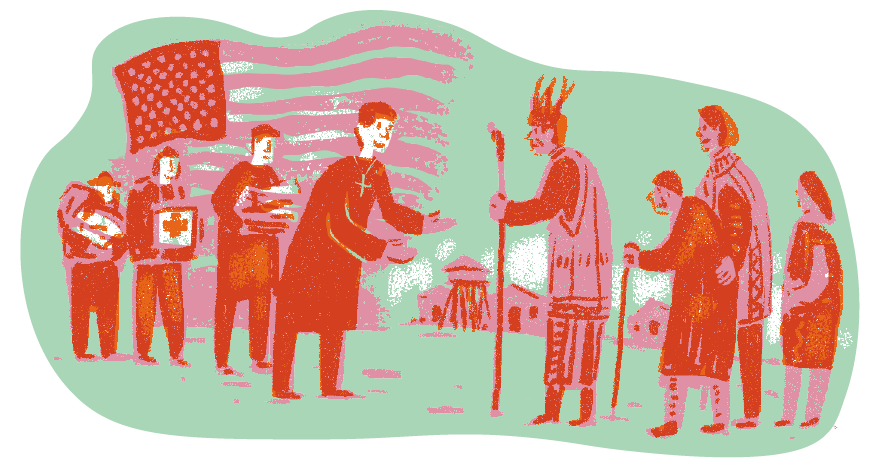
Miracles
of the 20th Century
After the end of World War II, Taiwan was freed from Japanese control, and Christianity continued to flourish on the island. Indigenous communities saw the arrival of foreign missionaries, the non-indigenous and indigenous Christians to spread the religion. Also, thanks to American aid, a large influx of indigenous converts was attracted by the church’s provision of substantial supplies and medical resources. The 1950s and 1960s thus saw the dramatic increase of indigenous Christian popularity, which was praised as the “miracles of the 20th century.”
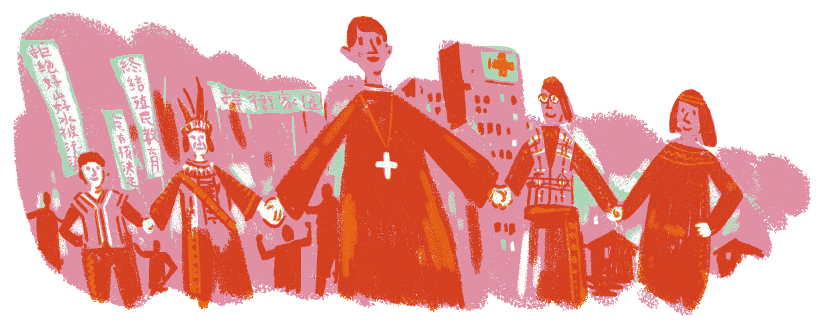
Faith Draws Us Closer Together
Three major branches of Christianity that have taken root in Taiwan: The Protestant, the Catholic, and the True Jesus Church. Each of them takes a different approach to indigenous peoples with varying degrees of closeness to local society. Over the past decades, the Christian faith has thrived and become an indispensable part of the lives of Taiwan’s indigenous peoples, bringing profound influence and change to their communities.
1.
In the early days when missionaries first arrived, the Roman alphabet was used to facilitate the translation of the Bible and transliteration of indigenous languages. Besides, they also taught local people to read and use the alphabet to build their own writing system, which is the most widely used among indigenous communities nowadays.
2.
Since the arrival of the Netherlands in the 17th century, Taiwan’s indigenous peoples have been colonized by several foreign regimes and subjected to various forms of control, oppression, and discrimination. But they are always the very group to be ignored and muted. This causes them to develop an inferiority complex of being indigenous and deepens their cultural alienation. Later, the introduction of Christianity enables community members to find spiritual consolation and support in the faith of God and a sense of belonging through religion. For those who work and study in cities, the church gradually becomes their spiritual pillar in the face of cultural shocks and financial worries.
3.
The resources and manpower of indigenous communities have always been scarce. The promotion of Christianity in these regions is usually implemented by establishing churches, providing free educational services, and distributing plenty of relief supplies. Besides, the close ties between churches in the mountains and those in the lowlands ensure mutual assistance and help to bring communities and people closer to each other.
4.
Attaching importance to human rights and dignity, the Presbyterian Church in Taiwan has long been dedicated to social care and seeks to speak up for the underprivileged. It played an active role in promoting transitional justice and name rectification for indigenous peoples in the 1980s by assisting with mobilization campaigns and the cultivation of ethnic consciousness. Today, the continuous progress of the Taiwan Indigenous Movement would not have been achieved without the appeal and leadership by the church.
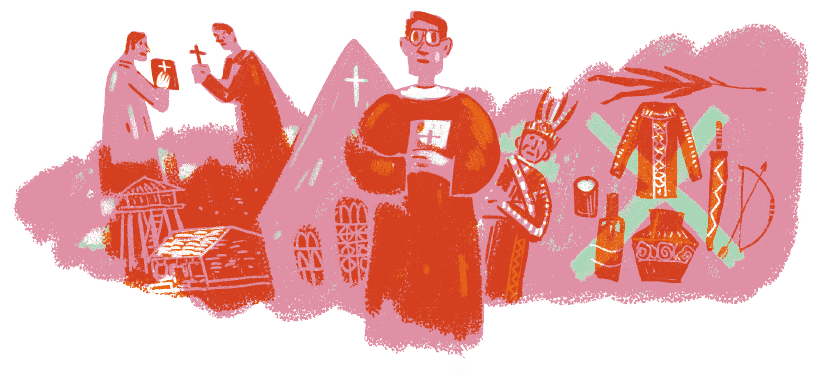
Loss of Indigenous Culture to the Faith of God
Today, Taiwan boasts a high percentage of indigenous Christian populations whose living habits and cultural identity have been deeply affected by their faith. In its early days in Taiwan, however, the Christian church approached indigenous peoples with a sense of superiority generated by colonialism. This led to the church’s misconceptions about indigenous cultures and society and attempts to destroy them, which resulted in the loss of traditions and a negative impact on indigenous people’s self-identity.
1.
Taiwan’s indigenous peoples have their special views on spirituality and divinity, believing that there exists a mysterious link between humans, nature, and the deceased. Upon its arrival, however, the Christian church fails to develop a good understanding of the significance of various indigenous cultures. It considers such things as indigenous mythology, rituals and ceremonies as well as shamanism as superstitions and heretical customs that must be banned. Many indigenous cultural artifacts and rituals, along with traditional costumes, have thus disappeared or destroyed, causing a crisis to Taiwan’s indigenous cultures.
2.
The rapid growth of Christianity in indigenous communities has also led to the decline of traditional culture. The values of Christianity’s monotheism conflict with those of indigenous beliefs in ancestral spirits. The traditional social structure of indigenous communities is gradually changed, with the role of community leaders being replaced by priests and the function of traditional family homes taken over by the church. Original indigenous beliefs are denied and lost one after another.
3.
The Protestant church, the Catholic church, and the True Jesus Church are the three major branches of Christianity in Taiwan’s indigenous communities. Each of them can be subdivided into different denominations with varying doctrines. In the case where a village has more than one of these branches with followers from the same clan, the tension between community members must be high and conflicts are inevitable.
Praying with Incense Sticks Enriches Diversity of Religious Culture
Apart from a mass conversion of indigenous people to Christianity, those living in the lowlands are also subject to the influence of non-indigenous religious customs thanks to their geographical proximity and frequent intermarriage. Such practices as setting up an altar at home, praying with incense sticks, and worshipping ancestors thus become common scenes in their daily lives. Despite this, however, traditional indigenous beliefs are not necessarily about to disappear completely, because the integration and transformation of Taiwan’s religious beliefs are way complicated and full of possibilities. In dealing with a foreign culture, indigenous people also try to incorporate their life experience and knowledge to create a new kind of culture unique to themselves.
Nowadays, with the rise of ethnic consciousness among indigenous communities, traditional religious cultures are showing signs of revitalization. Take annual rituals of various ethnic groups for example. Increased emphases are being placed by the government on such events, drawing the attention of media and attracting tourists to participate. The diversity of religious activities and cultural features, besides functioning to solidify indigenous people’s ethnic identities, also presents a vivid picture of their lifestyles
References:
施正鋒、邱凱莉(2018)| 轉型正義、基督宗教、解殖民。花蓮縣:台灣原住民族研究學會。
靳菱菱(2012)| 西方宗教與臺灣原住民族群認同建構的幾點觀察。人文與社會科學簡訊,第十三卷第三期,頁97-105。




